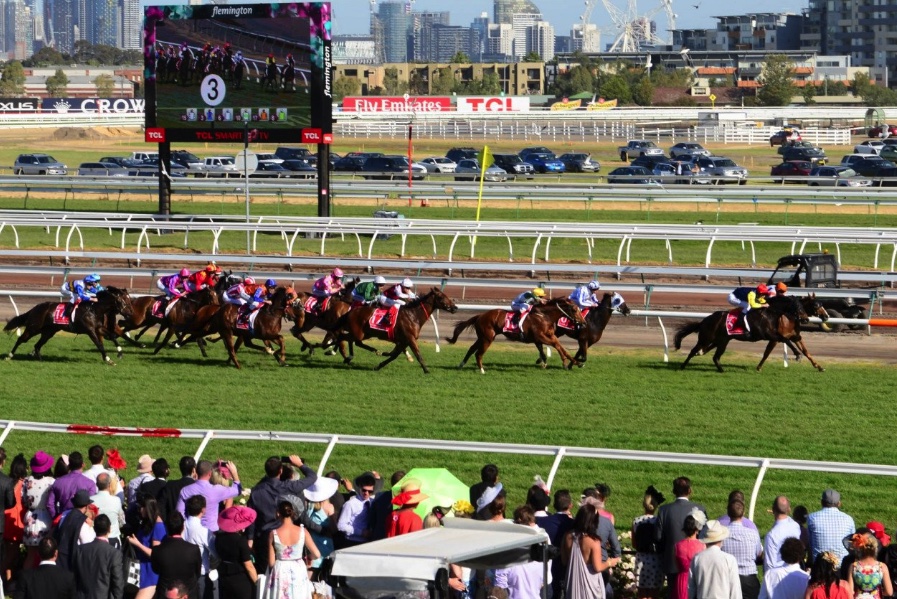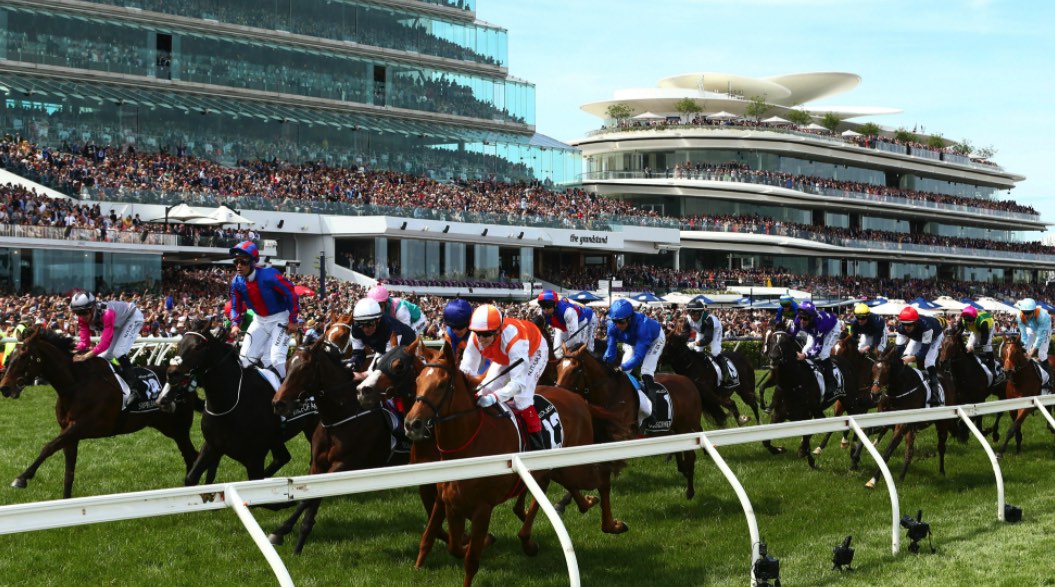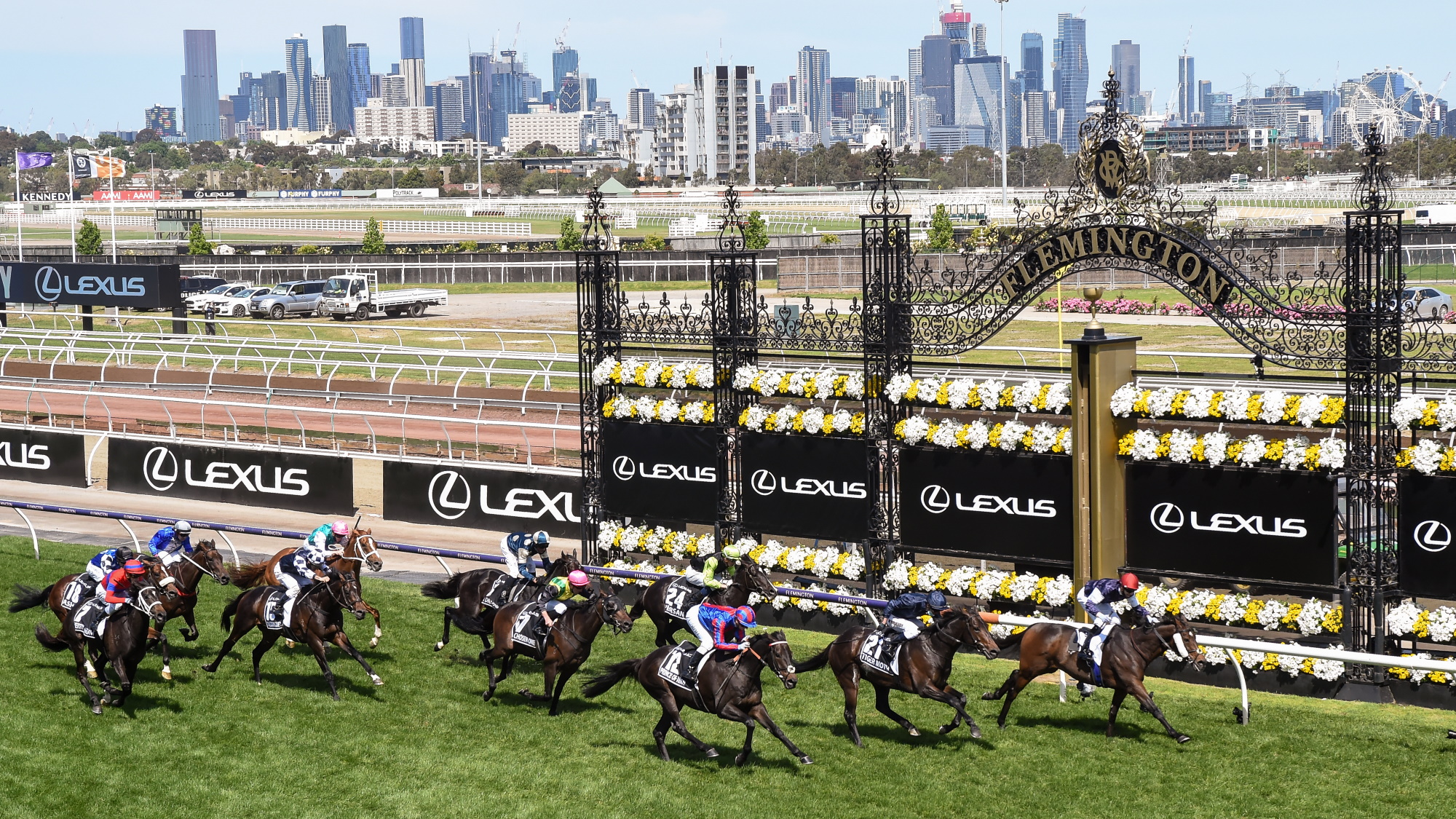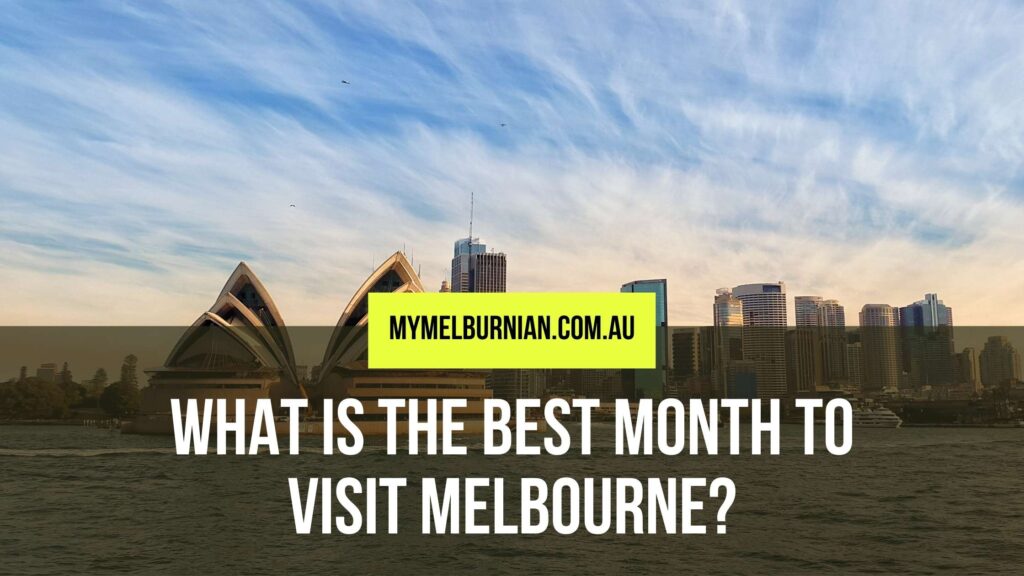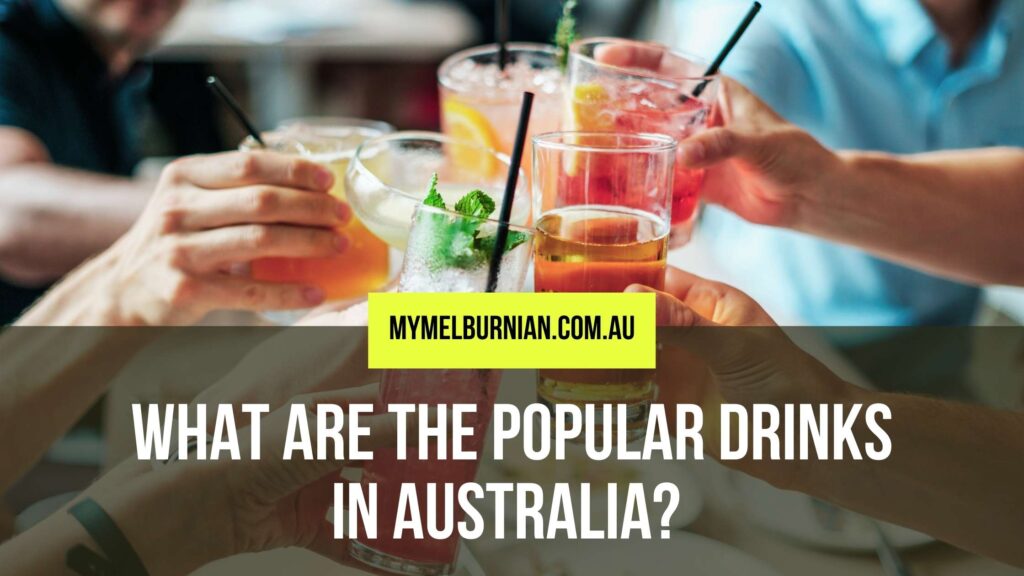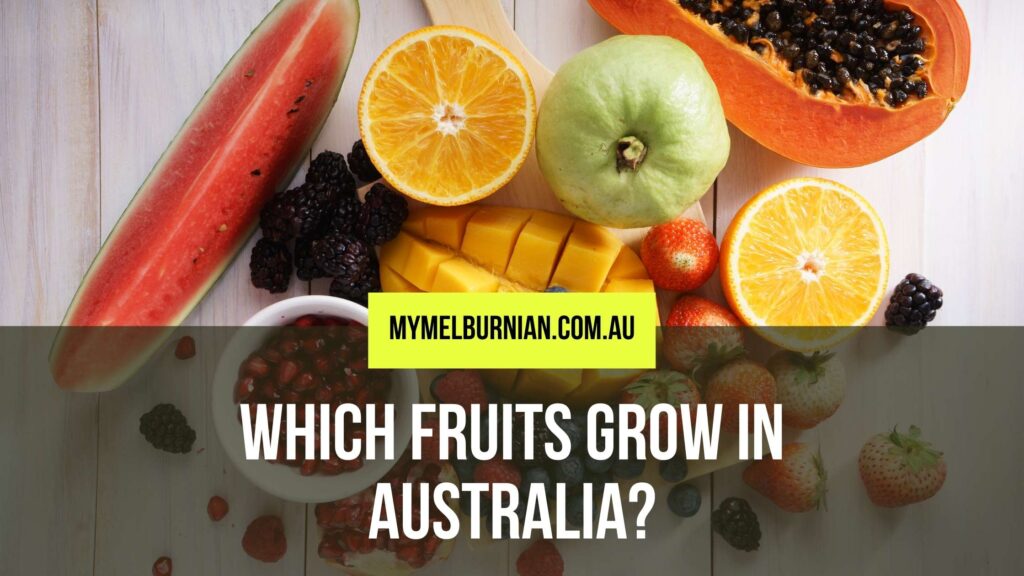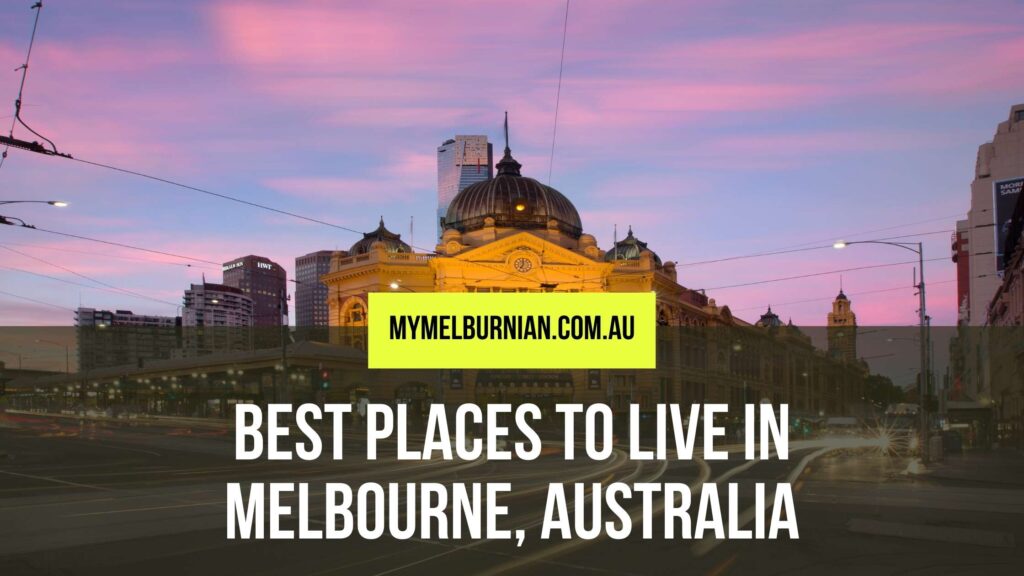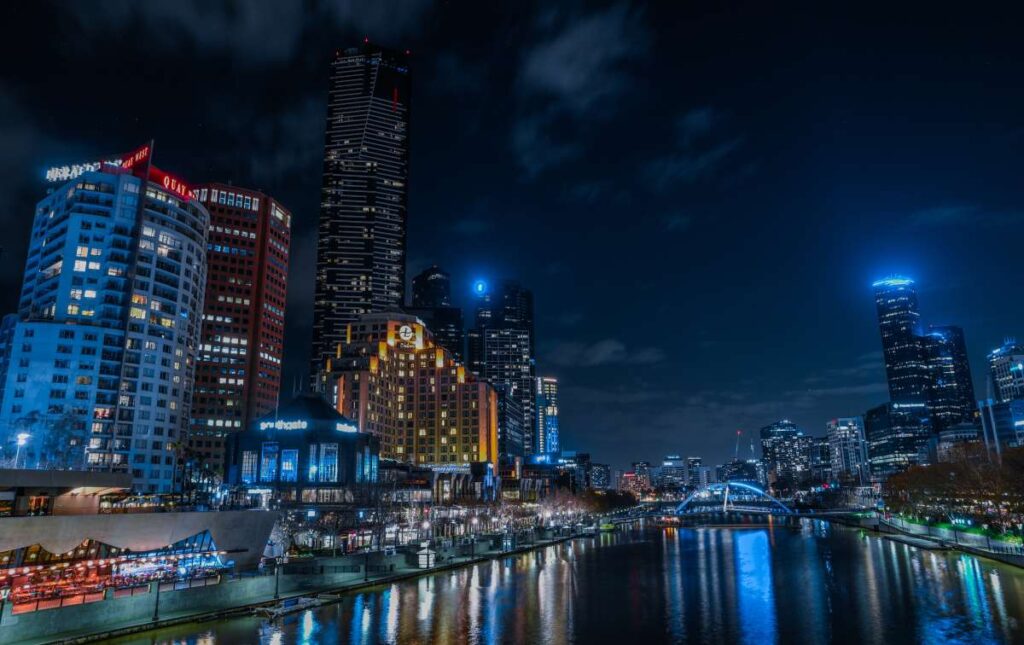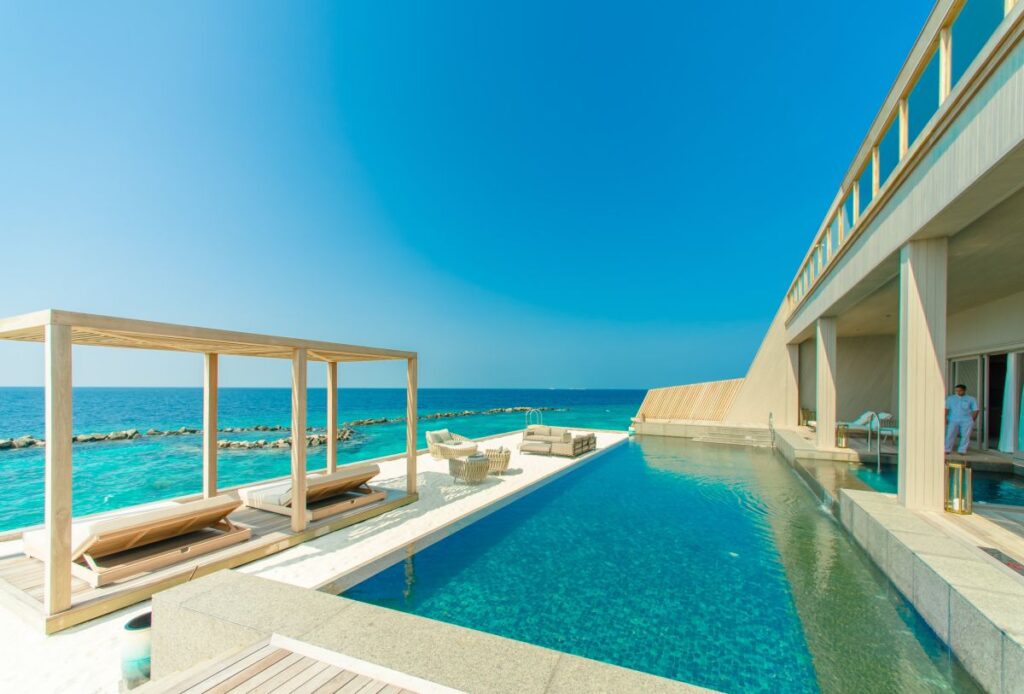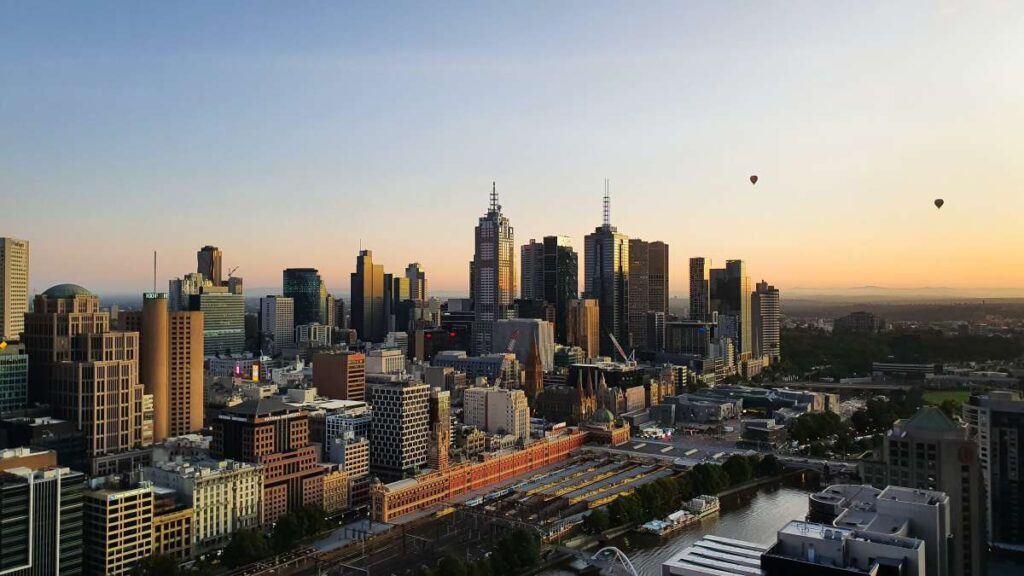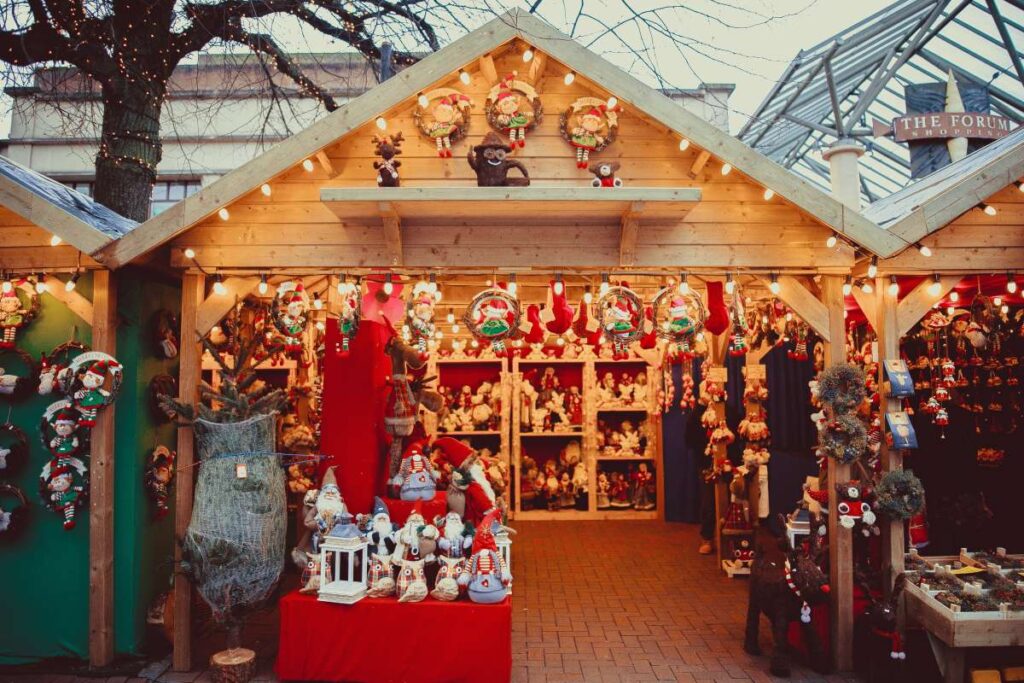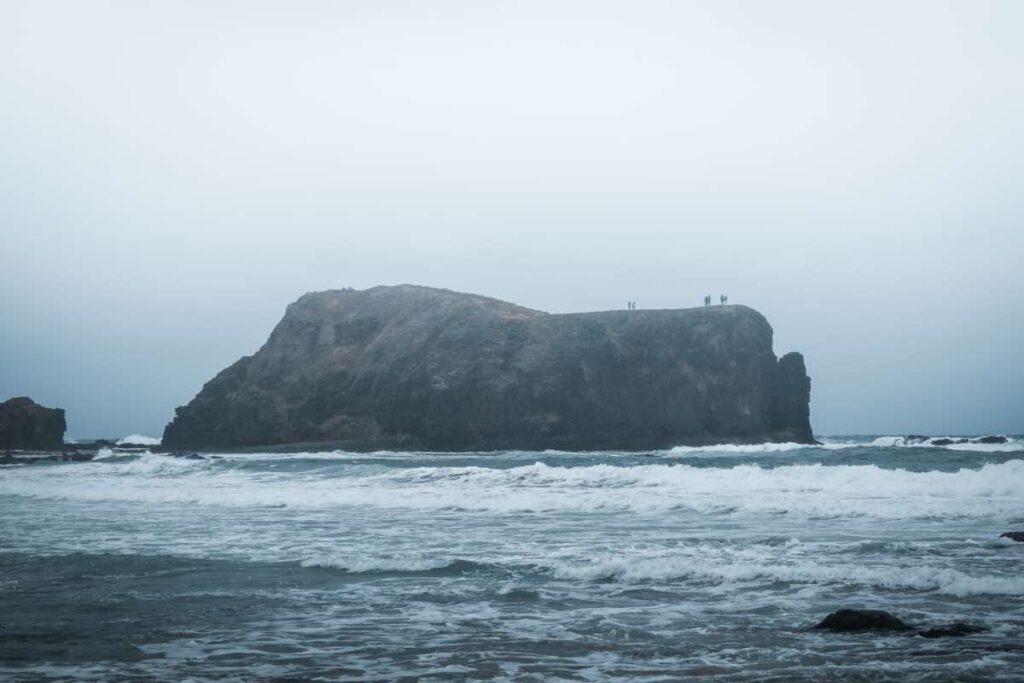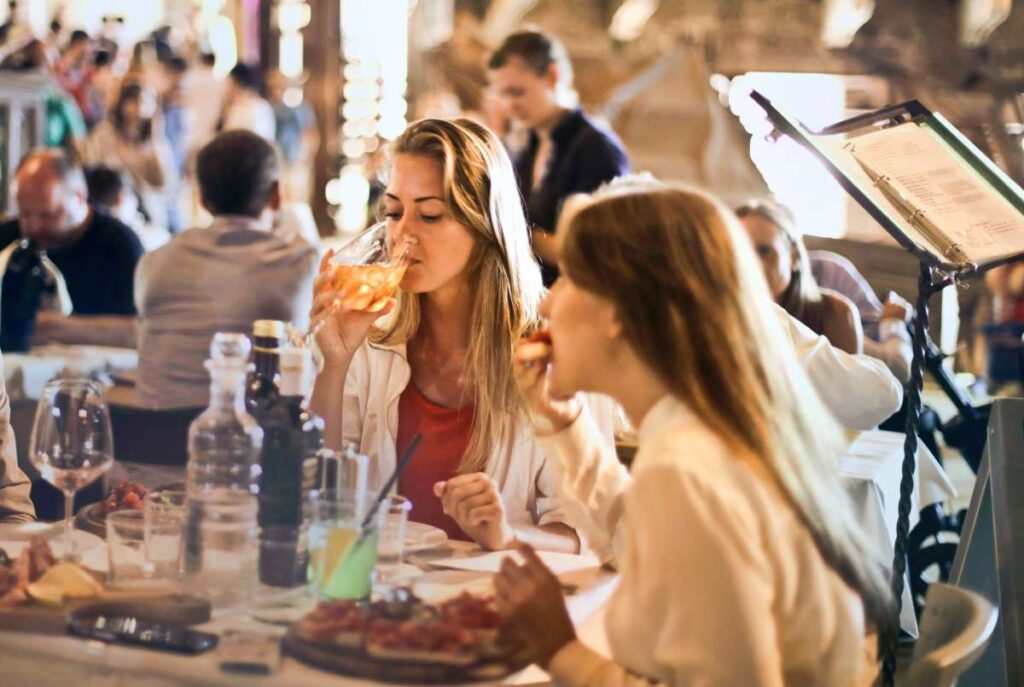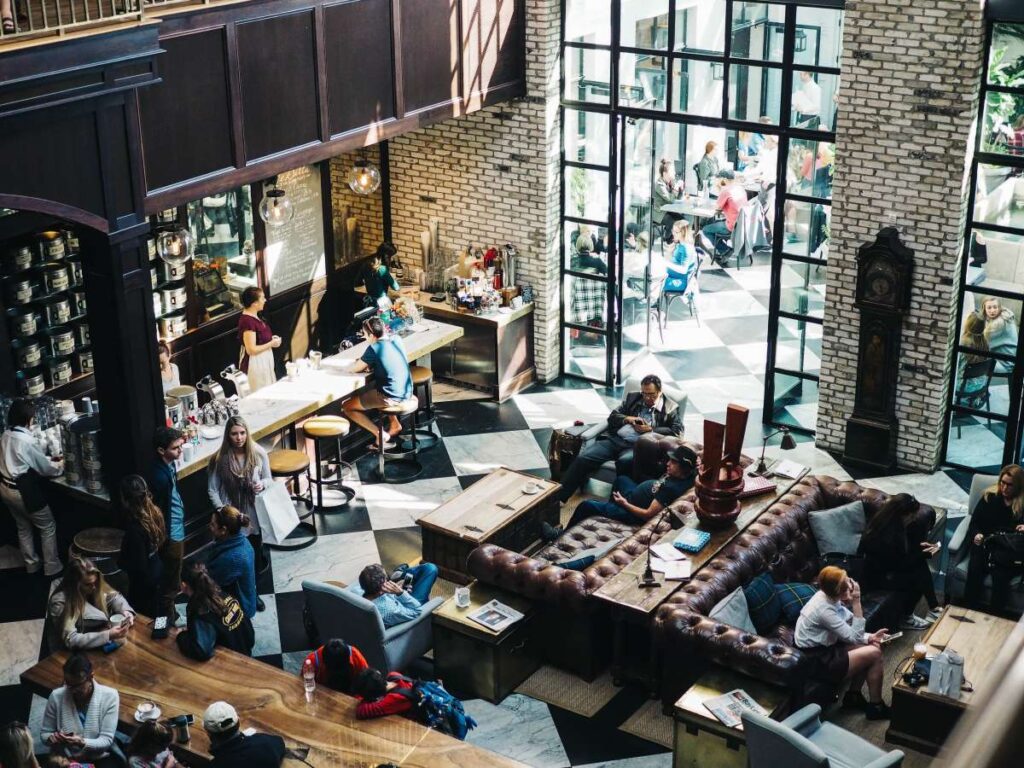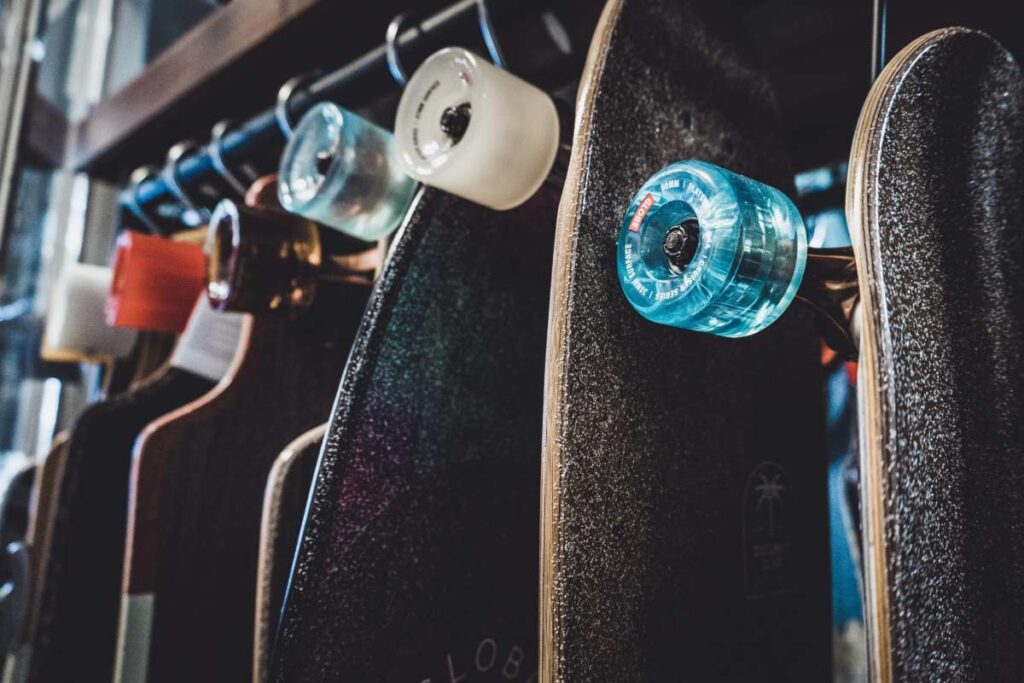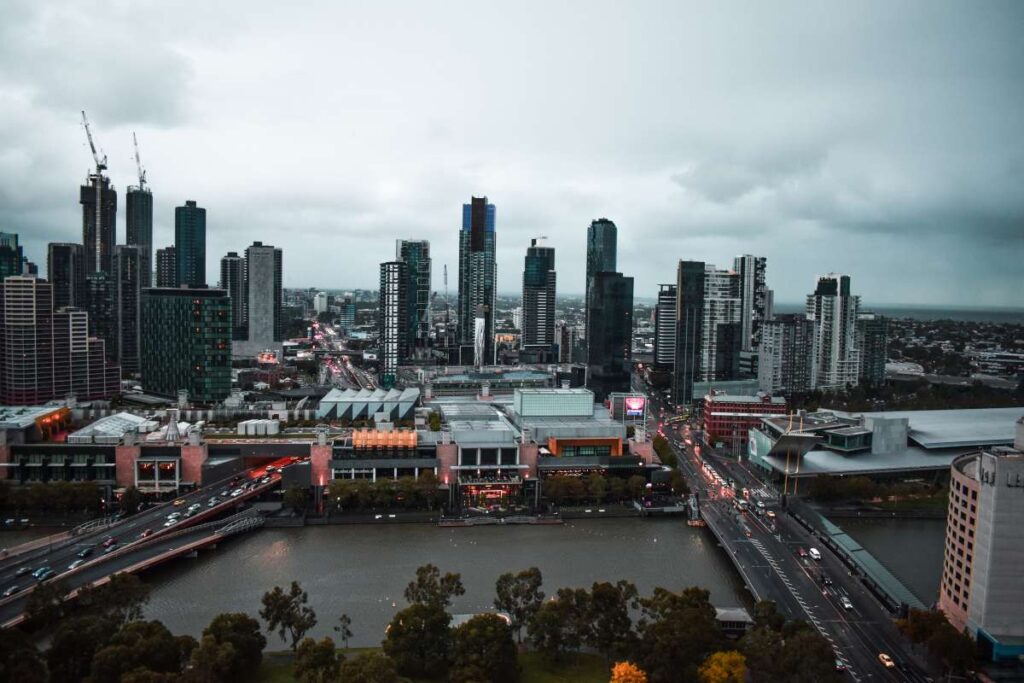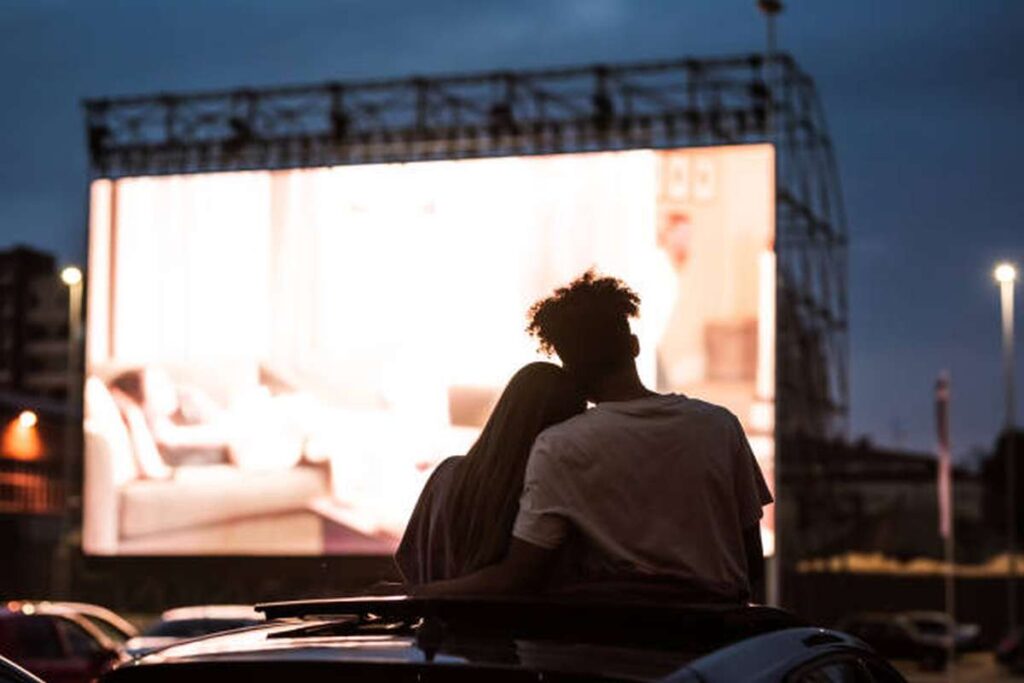When you think about major social and racing occasions in Australia, you probably think of Melbourne Cup Day. The Flemington Racetrack in Melbourne, Victoria, is where the big event takes place. The average crowd size at Flemington Racecourse is above 100 thousand. On this day, local races are staged all across Australia, and when the day's main race is held at Melbourne Racecourse, it is broadcast live on televisions at racecourses across the country. Approximately 650 million people across the world watch the race as it happens on television. On Melbourne Cup Day, many people tune in to the big race on television, the web, or the radio and stop what they're doing just before 3 p.m.
Some women wear their most extravagant or brightly coloured hats and dresses to the races, and there are even fashion shows on the field. VIPs, such as local, national, and international celebrities, are accommodated in specially constructed marquees at this joyous occasion. The holiday is typically celebrated with a swanky cocktail party featuring champagne, wine, and gourmet appetisers.
In the days leading up to the big race, many Australian businesses close down to participate in the festivities. The main race can be seen at office parties, company lunches, and evening teas where televisions are set up. Even people who never bet before will place a tiny stake or enter a sweep, a raffle in which every ticket holder is paired with a randomly picked horse, on this day. A minority of Australians hold the view that horse racing is inherently cruel, and they have voiced their disapproval in numerous protests over years.
The Origins Of Melbourne Cup Day
In 1840, during the height of the Gold Rush, Melbourne's residents decided to hold horse races along the river's edge. The terrain is mostly flat, with a hill for spectators in the north-west. Organizers erected temporary scaffolding the following year, but it wasn't until 1848 that a proper grandstand was built. The Melbourne Racecourse is what locals started calling the track.
The proprietor gave the place the name "Flemington" after a piece of property in Scotland that his wife had purchased, and by the 1850s, the racetrack was universally known as "Flemington Racecourse." The racetrack here is Australia's oldest.
In 1859, the Australian Champion Sweepstakes attracted horses from South Wales, Australia, and New Zealand. It was the inaugural Australian sporting event to be telegraphed in Sydney, and it drew a crowd of 40,000 spectators. A group of influential people in Melbourne's racing industry saw an opportunity to raise money for the track's expansion by creating a larger, more prestigious event.
In 1861, the first Melbourne Cup was held. In the early days of horse racing, there were two competing organisations: the Victoria Turf Club as well as the Melbourne Jockey Club. Disagreements between the two clubs led to poor course and Cup management, sabotage of the track, and financial ruin for both organisations. As a result, in 1864, they combined to form united Victoria Racing Club, which is now Flemington's governing body. The following year, the club was thrilled to see Melbourne Cup Day recognised as a half-day holiday.
The Victoria Racing Club, however, leased the site and did not actually own it. The government granted land ownership to the Victoria Racing Club under the Victorian Jockey Club Act in 1871. As early as 1875, the Melbourne Cup first held on a Tuesday. To mark the occasion and its magnitude, Victoria declared that day a state holiday two years later.
Perhaps it seems fitting that the only time Australia stops as one is to take a gamble on a questionable athletic pursuit, given that the country's top three icons are a cricket, a bushranger, and a racehorse. Even though most Aussies couldn't care less about horses, the Melbourne Cup celebrations nevertheless look like fun.
The gold discovery in 1853 brought a flood of gamblers onto Australia's coasts, which is where the Cup first took place. Whether the miners had a lucky day on the discovery of gold, they would travel to the racetrack to see if their good fortune would hold there as well. And so, as expected, it didn't, so racing clubs looked for ever-larger meets to fleece the prospectors.
In 1861, the Victoria Jockey Club hosted the inaugural Melbourne Cup, and so by 1866, the event had been designated as a national holiday. There could be as many as 30 starters for this race, which is raced over the unusually lengthy distance of 3200m, and the favourites are given extra weight to even the playing field.
Picking a winner is like trying to pin the tail on a donkey, despite the fact that knowing the rule is still essential for sounding like an expert at pre-race festivities. The most important factor in its success appears to be whether or not it has a catchy name. Every champion had a prestigious moniker like Phar Race, Black Knight, or Vintage Crop, with the exception of Kiwi, which conjures images of sheep.
The Cup's lottery nature is one of the reasons why it has become so popular with individuals who are not interested in racing. There's a certain charm linked with witnessing a guru who has researched the forms all year, bitterly stewing while some beginner gloats about just how she picked it winner solely because she felt its name would be easy to pronounce after downing her first bottle of champagne.
The Melbourne Cup is a horse race, yes, but it is also a rare occasion when Australians dress to the nines. Despite Australia being the home of the sheepskin boot and the cork hat, few international designers travel there to get their creative juices flowing. On the first Tuesday of November, though, the clouds separate and the chic women emerge. This is the day when the old adage "the bigger the helmet, the smaller the property" is reinterpreted to mean "the bigger the hat, this same smaller the skirt."
Even though it's simply a holiday in Victoria, many kind employers in other states close their offices for the day so their employees can participate in a team-building activity. Typically, there will be a sweep, a prise for the best hat, and a few drinks. An employer's popularity is roughly proportional to the number of alcohol consumed and inversely related to the amount of labour accomplished in a given day.
Concerning Melbourne Cup Day
Since the inaugural race at Victoria's Flemington Racecourse in 1861, Australia has celebrated Melbourne Cup Day annually. Archer not only won the race, but he repeated his victory the next year. For a couple of billion Australian dollars, roughly twenty thoroughbreds will compete in the handicap race. New Zealand thoroughbred Phar Lap, known as "Australia's miracle horse" after his 1930 victory in the Melbourne Cup, had his story turned into a film. However, there are many who think his death was the result of poisoning.
Since 1877, the first Tuesday of November has been a legal holiday in Melbourne because of the Melbourne Cup. While all 31 Melbourne metro municipalities observed the first Tuesday of November as a public holiday, some rural councils had not yet chosen an eleventh public holiday. As a result, in 2008 , Victorian Parliament introduced new legislation making Melbourne Cup Day a public holiday across all local areas in the state, with the exception of those with their own designated holidays. This means that as of now, the entire state of Victoria observes Melbourne Cup Day as a legal holiday. Since horse racing is so popular in Australia, there are many of other events like Melbourne Cup Day.
All of Victoria celebrates Melbourne Cup Day unless an ou pas council has designated a different holiday.
The Melbourne Cup has indeed been held annually since 1861, and the day of the event has been recognised as a public holiday for Victoria since 1877. The majority of people around the country forego wagering on the event and instead tune in to watch it on television.
The Melbourne Cup, sometimes known as the "race that stops a nation," takes place at Melbourne Racecourse and features a field of 24 horses aged three and up. It's not clear whether the day's public holiday is meant to celebrate the horse race or the headgear and fashions that accompany it. A full day of high society mingling with the rest of the crowd at what has become regarded as an urban style parade.
Only Victoria observes a holiday, but the rest of Australia slows down around 3 p.m. (AEDST) to watch the race and enjoy "office sweepstakes," champagne, and lunch together. People who wouldn't typically gamble spend two dollars on a sweepstakes ticket at the office on some random horse in order to get into the spirit of the day. As a way to relax and enjoy a cultural holiday, families and friends gather for midweek meals in restaurants across Australia.
Owners, trainers, jockeys, and bettors are all on edge at the racetrack. This has led to an increase in the number of international entrants. The first ten finishers each receive almost $6 million in prise money, but whatever of the outcome, the energy in Australia for Melbourne Cup Day is palpable.
Public Life
Many Melbourne residents take the day off in order to celebrate the annual Melbourne Cup. Melbourne, the state capital, celebrates Melbourne Cup Day as a state holiday, although other cities and municipalities in Victoria are free to celebrate a public holiday or half- public holidays instead. For instance, on the final Friday of November, the town of Wodonga, located in northern Victoria, celebrates App is currently Gold Cup Day.
Only Victoria has made this a legal holiday, however many other places close for the day. For this reason, urban neighbourhoods surrounding race tracks may experience increased traffic and parking challenges.
How To Celebrate The Melbourne Cup?
Watch The Parade
As part of the entire Melbourne Cup Carnival, a massive procession will take place in the city's central business district the day prior to the race. Each contestant has his or her own car or carriage to transport the jockey & trainer.
Wear A Big Hat
Kennedy Oaks Day is one of four race weekends that make up annual Melbourne Cup Carnival, and it is the day when female racing fans dress to the nines in their most elaborate flower garb and toast with a glass of bubbly just at Victorian Race Club. Today is not the day for holey jeans and T-shirts. Women's clothing these days is all about puffed sleeves, vivid colours, vibrant designs, lace, ruffles, and headpieces that border on the wacky, as well as shoes that were never meant to be worn on grass. Today is the Millinery Award catwalk competition, where Australia's best millinery designers show off their wares.
Place Your Bet
The Melbourne Cup has the second-highest prise money in the world after only four-horse races. To watch the race, which begins at 3:00 p.m. in Melbourne, office workers throughout Australia halt what they're doing and turn on the TV or log on to the internet.
Why Do We Enjoy Melbourne Cup Day So Much?
Cup Day Lasts A Week.
The Melbourne Cup Carnival lasts for a whole week and include four days of horse races, a fashion show, and plenty of other festivities. The Lux Melbourne Cup Tour takes the Hsbc Melbourne Cup trophy, an 18-carat gold loving Cup currently sponsored by Lexus, around the state to auction it off for charity.
Humans Become Clotheshorses
Today is not a casual cup day. The trend setters come out in force to Flemington. Women participate in Myer Fashions just on field throughout the year, with the winners from each region moving on to the national and state finals. But male peacock punters are not going to be outdone, so they're getting out their designs and pockets squares and going after the national fashion prise.
We Eat Like A Horse
Guests of Flemington Racecourse can choose from a variety of dining options, including gourmet burgers, upmarket buffets, and exclusive amusement packages that kick out with canapés upon arrival. Follow that with a feedbag of lamb shank, grilled fish, pumpkin & ricotta tortellini, then afternoon tea while you watch the race.
Why Attend The Melbourne Cup?
There are many exciting events to choose from throughout the early Spring Racing Carnival, but there is no bigger day than the day of the Melbourne Cup. Over one hundred thousand people flock to the Flemington Racetrack in Melbourne for a day filled with colourful outfits and scarves, plenty of wagering, and beautiful summer weather. The entire country stops what they're doing to watch the race as it airs live on television. However, the best way to enjoy the Melbourne Cup event is to buy a ticket for the entire event, as watching from home doesn't do justice to the atmosphere. Our top five reasons for attending the Melbourne Cup are listed below.
The Fashion
One of the most exciting aspects of attending the Cup is getting to dress up in one's finest and most vibrant attire. You can't go to a race without a hat or fascinator, which can range in size from a modest headband to a massive cloche. Since the very first race, when only the aristocracy were invited, this has been a staple of the event. Fashionable people tended to gather at horse races, where hats, especially those worn by women, were seen as a must-have item. Because of its widespread appeal, the field has also become the setting for fashion shows.
The Food
Finger foods are the way to go for the Melbourne Cup. Tempting treats to suit a variety of palates. The races are sponsored by gourmet food companies, who provide a variety of delectable gourmet goodies for attendees to compete with. Caviar, quiches, & antipasto boards are staples, as are other light summer dishes.
The Marquees
The affluent and famous may always be found hanging around where there is upscale dining and clothing. Those wishing to splurge can choose from a variety of marquees set up just for the Melbourne Cup. Celebrities from all around the world, both big and small, will be in attendance at this jolly occasion, and they will all be crowding into the VIP marquees. You don't have to be a member of the A-list to splurge on this expensive offer; all you need is a little extra cash. You may dine in elegance at the races thanks to the tents' sparkling champagne, fine wines, and gourmet fare.
The Races
One of the primary attractions of the Melbourne Cup is, of course, the actual race itself. The top horses and jockeys in the world compete on Melbourne Cup Day, making it the most important day of the year for horse racing. The actual race takes place at 3, but the whole day is packed with excitement thanks to a massive 10-race schedule. In addition, most carnival-goers will place a wager on the race, which will get them into the mood of the competition.
5 Famous Winner Facts That Will Blow Your Mind
Horse Homicide Was Suspected.
In 1930, a New Zealand horse named Phar Lap won the Melbourne Cup. He later died of arsenic contamination, though it is unknown if this was intentional.
The First Winner Was The Second Winner.
In the inaugural two races, in 1861 and 1862, a bay called Archer came up on top.
The Lady Was A Champ.
In 2003, 2004, and 2005, a mare by the name of Makybe Diva was the champion.
This Filly Was Fast
In 1895, a filly named Auraria became the first to ever win the Melbourne Cup.
The First Record Stands
On the first of his two consecutive victories in 1968, Rain Lover ran the fastest time in course history and won by an unprecedented eight lengths, the largest margin of victory since Archer of 1862, when 10-length record still stands.
Conclusion
The Melbourne Cup is a major horse racing and social event in Australia. The main event takes place in Melbourne, Victoria's Flemington Racecourse. The average number of spectators at a race at Flemington Racecourse is above 100,000. Roughly 650 million people across the world tune in to watch the event live. The inaugural Melbourne Cup race took place in 1861.
The event was officially recognised as a federal holiday in 1866. In order to level the playing field, the favourites are given extra weight and the field is expanded to accommodate as many as 30 potential starts for this race. Annually since 1861, when the first Melbourne Cup was run at Victoria's Flemington Racecourse, Australians have commemorated the day with a national holiday known as Melbourne Cup Day. Names like "Phar Race," "Black Knight," and "Vintage Crop" were given to each victor. You can translate "the bigger the helmet, the smaller the property" as "the bigger the hat, the smaller the skirt."
Melbourne residents have been able to take advantage of an annual holiday on the first Tuesday of November since 1877. The "race that stops a nation" occurs at Melbourne Racecourse, where the Melbourne Cup is held. Unless a new holiday has been established by a council in Victoria, the entire state celebrates Melbourne Cup Day. It is a public holiday in Melbourne, the state capital, every year on November 3, which is known as Melbourne Cup Day. The prise money for the Melbourne Cup is second only to that at races with four horses.
Aussies in the workplace stop what they're doing to watch TV or go online. More than 100,000 fans show up to the race every year at Melbourne's Flemington Racecourse. Among the top five reasons we can't miss the Cup this year are the delicious food, the stylish outfits, and the prime viewing locations. When it comes to horse racing, Melbourne Cup Day is unrivalled. Melbourne Cup Day features some of the best horses and jockeys in the world. Special VIP marquees serving champagne and gourmet fare have been built up for the races.
Content Summary
- Melbourne Cup Day is a huge social and racing event in Australia.
- The main event takes place in Melbourne, Victoria's Flemington Racecourse.
- On this day, racetracks all around Australia have their own events, and when the day's main race is place at Melbourne Racecourse, viewers can watch it live on TVs set up in venues across the country.
- Roughly 650 million people across the world tune in to watch the event live.
- A cocktail party with expensive drinks and tasty snacks is a common way to mark the occasion.
- Many Australian businesses close in the days running up to the big race so their employees may enjoy the celebrations.
- Horse racing has been the target of countless protests throughout the years from the small but vocal group of Australians who believe the sport is fundamentally cruel.
- Horses from South Wales, Australia, and New Zealand competed in the Australian Champion Sweepstakes in 1859.
- The inaugural Melbourne Cup race took place in 1861.
- Two rival clubs, the Victoria Turf Club and the Melbourne Jockey Club, emerged in the early days of the sport of horse racing.
- The club celebrated the establishment of a half-day holiday for Melbourne Cup Day the following year.
- The Melbourne Cup has always been held on the first Tuesday of November, beginning in 1875.
- The gold rush that began in 1853 attracted many gamblers to Australia's shores, and it was there that the Cup was first held.
- The first Melbourne Cup took place in 1861, and by 1866, it had been declared a national holiday thanks to the efforts of the Victoria Jockey Club.
- Knowing the rule is vital for seeming knowledgeable during pre-race festivities, but picking a winner is like attempting to pin the tail on a donkey.
- If it has a memorable name, that seems to be the single most important determinant in its success.
- The lottery aspect of the Cup is one of the reasons why it has gained popularity beyond the racing community.
- Even though it's a horse race, the Melbourne Cup is one of the few times a year where the average Australian will dress to the nines.
- Even though Australia pioneered both the sheepskin boot and the cork cap, the country is rarely visited by foreign designers in search of inspiration.
- Today is "the bigger the hat, the smaller the skirt" day, a twist on the age-old saying "the bigger the helmet, the smaller the property."
- Despite the fact that it is only a holiday in Victoria, many generous employers in other states shut down their businesses so their staff can take part in a team-building exercise.
- The norm is a sweep, a prise for the best hat, and a few drinks.
- Related to the Melbourne Cup
- Annually since 1861, when the first Melbourne Cup was run at Victoria's Flemington Racecourse, Australians have commemorated the day with a national holiday known as Melbourne Cup Day.
- Roughly twenty thoroughbreds will compete in the handicap race for a couple of billion Australian dollars.
- Phar Lap, a New Zealand thoroughbred, won the Melbourne Cup in 1930 and became renowned as "Australia's miracle horse." His life was the subject of a film.
- In honour of the Melbourne Cup, the first Tuesday of every November has been observed as a legal holiday in Melbourne since 1877.
- Thus, in 2008, the Victorian Parliament passed new law designating Melbourne Cup Day as a public holiday throughout the state, with the exception of localities that already observe the event.
- This officially makes Melbourne Cup Day a state holiday throughout Victoria.
- Melbourne Cup Day is only one of many celebrations of horse racing's enduring popularity in Australia.
- Unless a new holiday has been established by a local government, Melbourne Cup Day is observed across the state of Victoria.
- Melbourne Cup Day has been celebrated as a public holiday in Victoria, Australia, since 1877, and the yearly event has been going strong since 1861.
- The Melbourne Cup, sometimes known as the "race that stops a nation," is run by a field of twenty-four horses aged three and up at Melbourne Racecourse.
- It's unclear whether the public holiday today is in honour of the horse race or the hats and fancy attire that accompany it.
- Australia slows down around 3 p.m. (AEDST) to watch the race and have "office sweepstakes," champagne, and lunch together, although only Victoria has a holiday.
- Numerous Melburnians take the day off each November to attend the Melbourne Cup festival.
- Although other cities and municipalities in Victoria are free to celebrate a public holiday or a half-public holiday on Melbourne Cup Day, the state capital of Melbourne observes the event as a state holiday.
- Wodonga, a town in northern Victoria, commemorates App is presently Gold Cup Day on the last Friday of every November.
- Even though only Victoria has officially recognised this day off, many businesses still opt to be closed.
- The day before the race, the central business district of Melbourne will play host to a large procession as part of the Melbourne Cup Carnival.
- Women at Victorian Race Club are dolled up in their most ornate floral attire for Kennedy Oaks Day, one of the four race weekends that make up the annual Melbourne Cup Carnival.
- The top millinery designers in Australia have their creations on display today at the Millinery Award catwalk competition.
- The prise money for the Melbourne Cup is second only to that at races with four horses.
- There are horse races over four days during the Melbourne Cup Carnival, as well as a fashion show and other events.
- Having a cup of coffee today is not optional.
- Flemington sees a slew of the scene's most forward-thinking individuals.
- Myer Fashions only on field is a year-long competition open to women, with champions from each regional round advancing to the national and state finals.
- Throughout the early Spring Racing Carnival, there are many fascinating events to pick from, but none larger than the day of the Melbourne Cup.
- More than 100,000 people enjoy a day at Melbourne's Flemington Racecourse in brightly coloured clothing, patterned scarves, and summer sunshine.
- Watching the Melbourne Cup from the comfort of your own home isn't quite as exciting as being there in person.
- The following are our top five justifications for going to the Melbourne Cup.
- Dressing up in one's best and brightest outfit is one of the most thrilling parts of going to the Cup.
- The field's popularity has also led to its use as a venue for fashion displays.
- If you want to eat while watching the Melbourne Cup, finger foods are the way to go.
- Delectable snacks that will appeal to a wide range of taste buds.
- Many luxurious marquees have been erected just for the Melbourne Cup.
- Many famous people from all around the world will be congregating in the VIP tents to celebrate this joyous event.
- In the tents, you may enjoy the races in style with champagne, wine, and gourmet cuisine.
- The race itself is a major draw for visitors to the Melbourne Cup.
- In the world of horse racing, the most important day of the year is Melbourne Cup Day, when the best horses and riders compete.
FAQs About Melbourne Cup
The Melbourne Cup was introduced in 1861 by the Victorian Turf Club to trump Victorian Jockey Club races such as the Two Thousand Guineas. As a handicap race, the Melbourne Cup introduced a level of speculation that the club hoped would attract more entries and, therefore, higher prize money.
On 7 November 1861, about 4000 people gathered at Flemington Racecourse in Melbourne to watch a horserace that would become one of Australia's most important sporting events. Today, the Melbourne Cup is known as 'the race that stops a nation', drawing thousands every year on the first Tuesday in November.
Rather than earn a salary, a jockey receives a "mounting fee" (often $50-$110) for each race, sometimes riding eight races per day. The real money for jockeys comes from prize money if they can ride a horse to finish first, second or third in a race and earn part of the purse.
Their salary is based on the class level of the race they are competing in, how many races they compete in, and what place they take in the race. A jockey can earn anywhere from $28 to $184,000 or more per race.
After six horses died in the Melbourne Cup in 2013, racing authorities finally had to question what was going wrong and do something about it. Not doing so would have risked its status as 'the race that stops the nation'.

